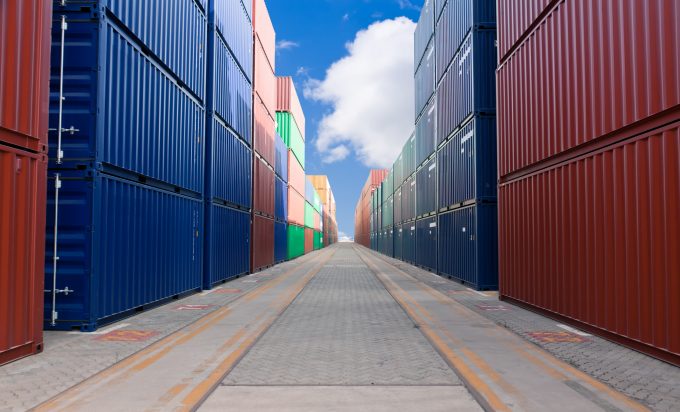CNBC: Nike CEO John Donahoe is out, replaced by company veteran Elliott Hill
CNBC reports: Nike on Thursday announced that its CEO John Donahoe is stepping down and company ...
GM: RAISING THE ROOF GGM: IN FULL THROTTLE GZIM: MAERSK BOOST KNIN: READ-ACROSSMAERSK: NOT ENOUGHMAERSK: GUIDANCE UPGRADEZIM: ROLLERCOASTERCAT: HEAVY DUTYMAERSK: CATCHING UP PG: DESTOCKING PATTERNSPG: HEALTH CHECKWTC: THE FALLGXO: DEFENSIVE FWRD: RALLYING ON TAKEOVER TALKODFL: STEADY YIELDVW: NEW MODEL NEEDEDWTC: TAKING PROFIT
GM: RAISING THE ROOF GGM: IN FULL THROTTLE GZIM: MAERSK BOOST KNIN: READ-ACROSSMAERSK: NOT ENOUGHMAERSK: GUIDANCE UPGRADEZIM: ROLLERCOASTERCAT: HEAVY DUTYMAERSK: CATCHING UP PG: DESTOCKING PATTERNSPG: HEALTH CHECKWTC: THE FALLGXO: DEFENSIVE FWRD: RALLYING ON TAKEOVER TALKODFL: STEADY YIELDVW: NEW MODEL NEEDEDWTC: TAKING PROFIT

An opinion piece last week in The Loadstar responded to the likelihood that a series of ultra-large container vessels (ULCVs, or more recently dubbed by Alphaliner Megamaxes) are now under construction in China and South Korea.
And it set it beside another news story which predicted the era of the full-container-load (FCL) was coming to an end, and posed the perfectly reasonable question: how will carriers overcome the paradox of building bigger ships for smaller consignments?
But I believe there may be even more insurmountable challenges ahead for the industry – in particular from what is being described as the “near-shoring shift”.
Investment decisions by container shipping lines have long seemed to be taken in isolation of other trends in international supply chains, but lines will have to take notice of what else is going on in the world, because sooner or later these things are going to have a direct impact on their businesses.
The relevant views of Tommy Lui were based on sound input and considerations; smaller but more dynamic (regular) shipment of certain commodity types – such as pharmaceuticals – was mentioned. This makes a lot of sense.
The overall utilisation of each container might well therefore slightly increase and, consequently, overall teu demand slightly decrease – but I suspect that it will not be radical and not happen overnight.
Indeed, there will always be work for the consolidators/integrators, and that side of the supply chain looks set for some healthy growth.
Whereas you can digitalise aspects of that which every party in the supply chain performs, exception handling will always be required, and it might not be possible or practical to try to automate that. I think that the forwarders will continue to have a market place, unless many others within the overall supply chain expand the scope of their product offerings – which could also happen.
But I think a far greater threat to the way the shipping industry is currently structured is likely to come from a shortening of supply chains – they are becoming increasingly more local, and increasingly smarter.
More relevant drivers, in terms of containership demand, are starting to become more visible. Both Adidas and now Nike are reducing supply lead-time from 60 to 10 days through exploiting advanced robotics and automated manufacturing techniques to facilitate more re-shoring and near-shoring. So whereas consumer demand will only rise, the average distance a teu moves is likely to decrease. The shorter the distance, the less value larger containerships generate.
If we are looking for a conflict of adjacent statements and views, we might instead hone in on the recent McKinsey revelation: that whereas transportation demand will become more regional (which is a trend we are seeing), these shorter commerce lanes will be served by 50,000 teu ships!
Just from a practical scheduling and lead-time perspective, a 50,000 teu vessel will exchange 130,000-plus container moves on a single round-trip rotation, which at today’s best-in-class terminals would mean that it will spend +21 days/+3 weeks in port during one rotation. If it takes four weeks to sail inter-continental, this port time is already too significant, but if it takes only one-to-two weeks to sail intra-regional, it becomes completely prohibitive.
So, I think that we do not need to fear the shortcomings of the English dictionary just yet…
This is guest post by Andy Lane, partner at liner shipping analyst CTI Consultancy
Comment on this article